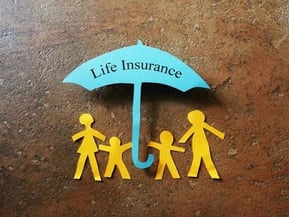 This year Wisconsin contractors and manufacturers with apprenticeship programs are saving 2% on their Workers’ Compensation insurance premium.
This year Wisconsin contractors and manufacturers with apprenticeship programs are saving 2% on their Workers’ Compensation insurance premium.
The 2% credit (maximum $2,500) is a no-brainer for any business to claim with an active apprenticeship program, but there are few qualifications to keep in mind along with the knowledge that some insurance carriers are opting out of the savings altogether.
In an atmosphere of record low unemployment rates, and the Foxconn behemoth on the horizon, the state is incentivizing apprenticeship programs in hopes they will help fill the growing trades’ skills gap. In March of this year, Wisconsin passed Assembly Bill 508 which slashed regulations in the trades requiring ratios often higher than 4 journeymen to 1 apprentice down to 1-to-1. In September of last year, financial incentives were announced, granting a 2% Apprenticeship premium credit on Workers’ compensation insurance for Wisconsin business going into effect next month.
Who qualifies?
Claiming the 2% credit for your business is not much of a hoop to jump through, but on the other hand Wisconsin isn’t handing them out like candy. The credit only applies to insurance workers’ compensation polices with effective dates of 10/1/2018 or later. If your policy has already renewed in 2018, you’ll need to change your effective date (not always recommended) or wait until next year to claim the credit.
Your agent must notify your insurance carrier that you are eligible for the credit and provide evidence of participation in an apprentice program administered by the Wisconsin Bureau of Apprenticeship Standards for a minimum of 6 months. This means to claim the 2% credit on 10/1/2018 your apprentice program must have been approved by WBAS and running since March of 2018.
Not Every Insurance Carrier is Opting-In
If your insurance policy is in the pool, your company is automatically qualifies for the program. If your business is in the private market, which most are, there is a chance it might not…
When the Office of the Commissioner of Insurance announced the credit in 2017, they made it clear that this was a voluntary program for the private insurance market. While all carriers were automatically enrolled into the program, it was left up to carriers if they wanted to opt-out.
At first there was a bit of waffling, but in the end a majority of carriers have decided to opt-in. That said, a large minority are opting-out, some of whom are big players in the construction and manufacturing markets. R&R Insurance keeps an updated list of carriers opting-in and out.
Contact an agent to see if your carrier is opting-in for the 2% credit.
 As of 2018, the videos below are ranked as the most popular by OSHA and the US Department of Labor.
As of 2018, the videos below are ranked as the most popular by OSHA and the US Department of Labor.
 With Labor Day behind us and cooler temps in the future, it's time to think about storing those summer toys. From convertibles and boats, to motorcycles and jet-skis, unfortunately certain vehicles just aren't suited for Wisconsin winters. Below is a small tip for winterizing your car that can save you from a big claim next summer.
With Labor Day behind us and cooler temps in the future, it's time to think about storing those summer toys. From convertibles and boats, to motorcycles and jet-skis, unfortunately certain vehicles just aren't suited for Wisconsin winters. Below is a small tip for winterizing your car that can save you from a big claim next summer.
 Jeff and Tracy recently purchased a secondary home in beautiful Door County, Wisconsin. While they look forward to spending summers on the lake, they have realistic expectations about the amount of time they'll be able to spend in their new vacation home. With this in mind, they intend to rent out the property approximately 5 weeks out of the year. Unfortunately, in the world of home insurance, most carriers will not insure a secondary / seasonal property that is rented on a short term or weekly basis.
Jeff and Tracy recently purchased a secondary home in beautiful Door County, Wisconsin. While they look forward to spending summers on the lake, they have realistic expectations about the amount of time they'll be able to spend in their new vacation home. With this in mind, they intend to rent out the property approximately 5 weeks out of the year. Unfortunately, in the world of home insurance, most carriers will not insure a secondary / seasonal property that is rented on a short term or weekly basis.
 When was the last time you reviewed your coverage? Like other financial assets, life insurance policies require ongoing management to ensure your policy is performing up to expectations. There are a number of factors that influence life insurance policies and one major negative influencer in recent years has been interest rates. Agents and insurance companies that designed a number of these life insurance policies didn’t factor in lower interest rates, and the result has been that a number of policies are lapsing prematurely.
When was the last time you reviewed your coverage? Like other financial assets, life insurance policies require ongoing management to ensure your policy is performing up to expectations. There are a number of factors that influence life insurance policies and one major negative influencer in recent years has been interest rates. Agents and insurance companies that designed a number of these life insurance policies didn’t factor in lower interest rates, and the result has been that a number of policies are lapsing prematurely. This year Wisconsin contractors and manufacturers with apprenticeship programs are saving 2% on their Workers’ Compensation insurance premium.
This year Wisconsin contractors and manufacturers with apprenticeship programs are saving 2% on their Workers’ Compensation insurance premium. Insurance needs are often overlooked for college kids in the hustle and bustle of preparing for college. It's not uncommon for college kids to have thousands of dollars of electronic equipment and a closet bursting with clothes in the dorm rooms, as well as bicycles and instruments.
Insurance needs are often overlooked for college kids in the hustle and bustle of preparing for college. It's not uncommon for college kids to have thousands of dollars of electronic equipment and a closet bursting with clothes in the dorm rooms, as well as bicycles and instruments. The IRS recently issued a
The IRS recently issued a  80% of Homeowners Overlook Costly Water Leak Exposure When Heading on Vacation
80% of Homeowners Overlook Costly Water Leak Exposure When Heading on Vacation